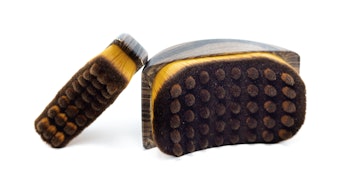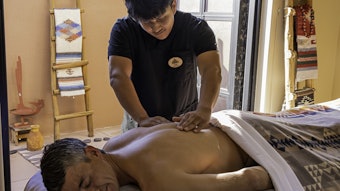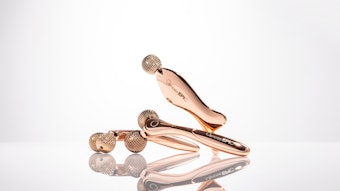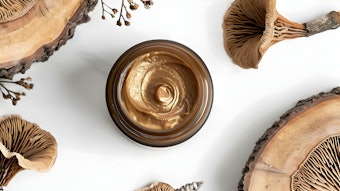A new study done at the Yale School of Medicine has indicated acupuncture can be used to successfully treat lower back and pelvic pain in women who are pregnant.
A special acupuncture technique can help ease lower back and pelvic pain in pregnant women, new research shows. In a study, women who had pressure needles held in place with tape at three acupuncture points in their ears for one week were more likely to experience significant reductions in lower back and pelvic pain than those who had the needles placed at three "sham" points or women in a control group who didn't get real or fake acupuncture.
Pregnant women often suffer from pain in the lower back and pelvis, and this can set the stage for chronic pain later on, Dr. Shu-Ming Wang of the Yale School of Medicine in New Haven, Connecticut and colleagues note in the American Journal of Obstetrics & Gynecology.
Ear acupuncture might offer a drug-free way to help ease pain in these women, Wang and colleagues say. They randomly assigned 159 women in the 25th to 38th week of pregnancy to receive real acupuncture, acupuncture delivered to points that would theoretically not affect pain in the pelvic or lower back area, and a control group. Every woman was also instructed to use self-care as needed, including resting, taking acetaminophen, and applying warm and cold compresses.
All of the 152 women who completed the two-week study reported some degree of pain reduction and improvement in their ability to function. A 30% or greater reduction in pain was reported by 81% of women in the acupuncture group, 59% of women in the sham acupuncture group and 47% of women in the control group. The difference between the sham and control groups wasn't statistically significant.
Thirty-seven percent of women in the acupuncture group were pain-free after a week of acupuncture, compared to 22% in the sham group and 9% of the control group. Improvements in function were significantly greater among women who had real acupuncture compared to those who got the fake version or received no treatment.
But the pain relief didn't persist for some; a week after the end of acupuncture treatment, 68% of those who received the real thing still had a 30% or greater reduction in pain compared to the beginning of treatment, while 32% in the sham acupuncture group and 18% of the control group sustained this level of pain reduction. There was no significant difference among the groups in the percentage remaining free of pain two weeks into the study.
The only side effect was temporary tenderness in the ear area, reported by one woman in the acupuncture group and three in the sham acupuncture group. The treatment is inexpensive, the researchers note, at a cost of $17–20 for a pack of 100 needles, and it takes about three minutes for the needles to be put in place if an experienced person is doing the job.
In future studies, it would be worthwhile, the researchers say, to explore whether extended continuous ear acupuncture yields a more sustained effect and determine the characteristics of acupuncture responders versus nonresponders. They call for larger studies to investigate these issues, and to determine whether the treatment has any effect on pregnancy outcome.
Source: American Journal of Obstetrics & Gynecology, September 2009.
Reuters, October 16, 2009










